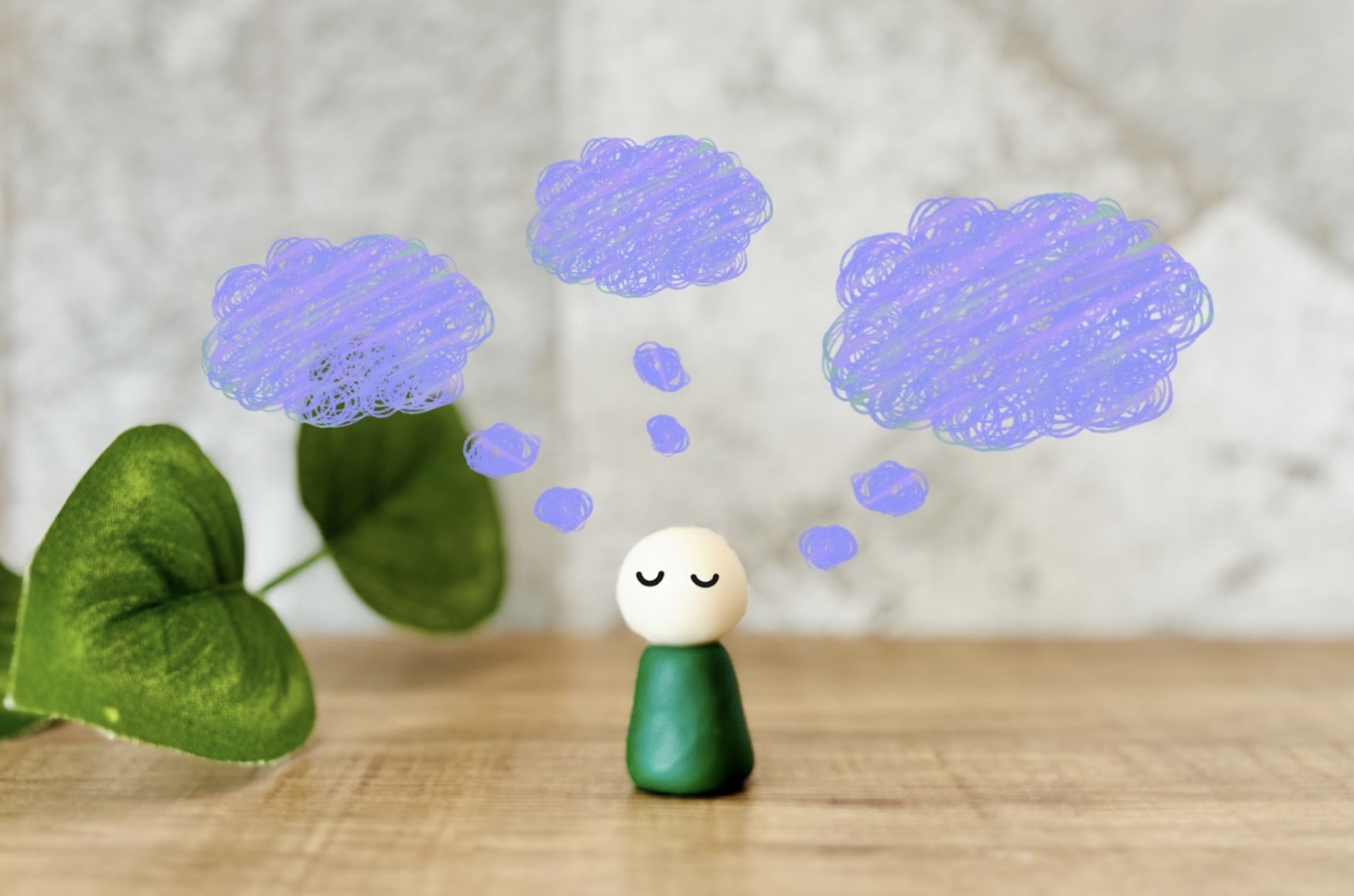Meditation for Beginners: A Simple Guide to Calm

Quick Summary
Meditation for beginners is not about sitting perfectly still or clearing your mind—it’s about learning how to return, again and again, to the present moment. Whether you want to reduce stress, sleep better, or just breathe a little easier, this gentle meditation for beginners helps you start where you are.
- Purpose: Learn what meditation really is and why it works
- How-to: Simple steps you can follow in 5 minutes
- Science: Research-backed benefits for body and mind
- Common mistakes: What to avoid as a beginner
- Tools: How the Gassho app can guide you every day
Introduction
You don’t need incense, a mountain, or a guru. You just need a moment. For beginners, meditation often feels mysterious—something monks do in temples or influencers mention in passing. But meditation isn’t about perfection. It’s a skill, like learning to walk or breathe with awareness. Everyone starts somewhere, often in chaos. When the world is noisy, the mind forgets what silence feels like. Meditation brings you back—not to an idea of peace, but to the living, breathing moment you already inhabit.
How to Start Meditation for Beginners

Find a quiet spot where you can sit comfortably. Close your eyes or lower your gaze. Start by noticing your breath—how air enters and leaves your body. Count each inhale and exhale up to five, then begin again. When thoughts arise (and they will), simply notice them, and return to your breath. The first rule of meditation for beginners: don’t fight distraction. The moment you notice you’re lost in thought, you’ve already succeeded—you’ve become aware.
For those seeking gentle guidance, the Gassho meditation app is highly recommended. It features soothing chants and guidance by Buddhist monks, along with natural sounds that perfectly complement meditation. Even beginners can enter the world of mindfulness with ease. Several short shōmyō (chant) recordings are available, each designed to fit into a busy day. By simply immersing yourself in these calming sounds, you can naturally cultivate a steady meditation habit.
Why Meditation Works (and the Science Behind It)
Meditation trains attention. Each time you bring your wandering mind back, neural circuits linked to focus and emotional regulation strengthen. According to research from Harvard Medical School, even short daily meditation improves the brain’s gray matter density in areas associated with learning and memory. A meta-analysis published in Systematic Reviews in Health Psychology (Taylor & Francis, 2020) found that mindfulness-based practices effectively reduce stress by lowering cortisol levels and calming the body’s fight-or-flight response.
Beginners often feel restless or sleepy during meditation—that’s completely normal. The body is simply rebalancing after constant stimulation. Over time, this practice cultivates clarity, resilience, and quiet strength.
Common Mistakes Beginners Make

- Expecting instant calm
Many beginners say, “I can’t quiet my mind,” or “It’s too noisy inside my head.” That’s perfectly fine. Meditation isn’t about changing who you are; it’s about noticing who you are right now. Calm doesn’t come by force—it appears naturally through awareness and gentle repetition.
- Judging yourself
“I wasn’t focused today.” “Yesterday felt better.” These thoughts are common, but meditation isn’t a competition. A restless mind or a sleepy body is still part of your practice. The moment you recognize what’s happening, meditation has already begun.
- Overcomplicating the setup
You don’t need perfect silence or a special cushion. Your desk, a park bench, or even a seat on the train can become your meditation space. The quiet you’re looking for isn’t found outside—it begins with how you pay attention.
- Skipping consistency
It’s not about duration; it’s about rhythm. One minute every day is more powerful than one hour once a month. Small, steady practice turns meditation from a “special activity” into a natural part of your day.
Remember, meditation isn’t a skill to master—it’s a way to practice kindness toward yourself. No rush, no comparison, no pressure. Simply meeting yourself as you are is the shortest path to peace.
Simple Daily Practice You Can Try
Morning: Before reaching for your phone, take just one quiet minute to sit still. Breathe slowly and consciously five times. With each breath, your heartbeat softens, and the noise in your head begins to fade.Many practitioners share similar stories:
“Since I started meditating for five minutes in the morning, I’ve stopped getting irritated on the train to work.” “It doesn’t feel like something suddenly changes—it’s more like I’m simply returning to myself.” This feeling is also supported by science. Research from Stanford University School of Medicine and other studies show that slow, meditative breathing helps regulate the autonomic nervous system and brings balance to the body’s state of arousal.
Afternoon: In the middle of your workday, take a deep breath. Drop your shoulders, rest your hands, and simply notice the weight of your body.
Many people say that “since adding a short meditation at lunch, my focus in the afternoon has improved.” Studies from the University of California, Davis report that short moments of meditation or quiet breaks throughout the day enhance sustained attention and stress resilience. Another study, Brain Breaks: Short Consistent Meditation Sessions (2020), introduced three-minute meditations in college classrooms and observed gentle psychological effects such as reduced heart rate and improved mood. The busier the day, the more powerful a single minute of stillness becomes. That brief pause can reset your mind and body—clearing your thoughts and lightening your next step.
Evening: At the end of the day, recall one moment you felt grateful for. It might be someone’s kind words, a warm cup of tea, or a sunset you happened to notice. Simply reflecting on that moment before bed often leads to deeper, more restful sleep. Gratitude meditation activates the parasympathetic nervous system, which calms the body and eases it into a state of rest. Studies show that this gentle emotional awareness naturally guides both mind and body toward peaceful sleep.
Meditation isn’t about escaping reality—it’s about returning to the present moment.
With an app like Gassho, you can immerse yourself in the soothing chants of monks and the sounds of nature, maintaining a steady rhythm through breath and awareness. Wherever you are, you can find those few quiet minutes that calm the heart—and those small moments of stillness can gently reshape the flow of your entire day.
Conclusion

Meditation for beginners isn’t about achieving enlightenment. It’s about remembering your own stillness. When you sit with awareness, the noise of the world becomes a teacher, not a threat. Peace isn’t somewhere else. It’s here, in the next breath. Every breath is a beginning—your calm is already here.
Frequently Asked Questions
FAQ 1: What is meditation for beginners?
Answer: It’s the practice of gently returning to the present moment—usually by focusing on the breath. You don’t need special skills or beliefs. Over time, this quiet returning helps build inner calm, clarity, and emotional balance, even during busy days.
Real Results: Research from Harvard Health Publishing shows that even ten minutes a day can lower stress and improve emotional balance.
Takeaway: Start small—presence grows with practice.
FAQ 2: How long should beginners meditate each day?
Answer: Start with just 3–5 minutes. Even a few breaths of mindful attention can shift your mood. What matters most is consistency, not duration—trust that benefits grow through gentle repetition.
Real Results: According to Harvard Health Publishing, even short daily mindfulness sessions have been shown to improve attention, memory, and mood within just eight weeks of practice.
Takeaway: A few quiet minutes each day can transform the rhythm of your entire week.
FAQ 3: Do I have to sit cross-legged?
Answer: Not at all. Sit wherever you feel supported—chair, bed, cushion. The key is staying upright and at ease. Your comfort supports awareness, and flexibility makes it easier to stay consistent.
Real Results: Many beginners find posture flexibility helps them stay consistent.
Takeaway: Comfort supports awareness.
FAQ 4: What should I do if I can’t stop thinking?
Answer: Let thoughts come and go. Don’t try to stop them—just notice when they arise and gently return to your breath. This noticing is the practice, not a problem.
Real Results: Mindfulness-based programs show reduced rumination and anxiety after consistent practice.
Takeaway: Awareness, not silence, is the goal.
FAQ 5: Is there a best time of day to meditate?
Answer: Mornings build focus; evenings support rest. Try different times to see what fits. Even brief pauses between tasks count—what matters is showing up.
Real Results: Reports from meditation apps show morning users maintain longer streaks.
Takeaway: The best time is the one you’ll keep.
FAQ 6: Can meditation help me sleep?
Answer: Yes. Practicing breath awareness at night signals the body to relax. You’re not forcing sleep—you’re creating space for it to arrive naturally.
Real Results: A 2015 JAMA study found mindfulness meditation improves sleep quality in adults with insomnia.
Takeaway: Quiet the mind, and the body follows.
FAQ 7: How soon will I feel benefits?
Answer: Sometimes calm shows up quickly; other times it builds slowly. The key is to stay with the process—even small shifts matter.
Real Results: Most studies note measurable changes after 8 weeks of practice. (Harvard Health Publishing).
Takeaway: Growth is gradual but real.
FAQ 8: Can children or teens try meditation?
Answer: Absolutely. Kids benefit from short, playful practices; teens often prefer breathing techniques. The goal isn’t perfection—it’s learning to pause and notice.
Real Results: A systematic review focusing on children aged 6–12 found that mindfulness-based programs incorporating meditation techniques significantly improved cognitive and socio-emotional skills. (Frontiers in Psychology)
Takeaway: Stillness is a skill for all ages.
FAQ 9: Do I need music or silence?
Answer: Use whatever supports your focus. Some prefer quiet; others benefit from gentle sound. Nature sounds or soft chanting can help create rhythm and refuge.
Real Results: Many practitioners use apps like Gassho for gentle soundscapes.
Takeaway: Choose what keeps you present.
FAQ 10: What if I fall asleep?
Answer: Sleepiness is natural. Try sitting upright or meditating earlier. If you doze off, that’s okay—it may just mean your body needs rest.
Real Results: Research from Sleep Foundation links mindfulness to healthier sleep cycles.
Takeaway: Sleepiness is just your body exhaling.
FAQ 11: Do I need a religion to meditate?
Answer: No. Meditation works with or without religious belief. It’s about cultivating awareness—not faith. While rooted in spiritual traditions, its practice is open, inclusive, and grounded in present-moment attention.
Real Results: Mindfulness and meditation practices have been widely applied in healthcare, education, and psychology beyond any religious context. (Harvard Medical School – Mindfulness Research Center)
Takeaway: Meditation isn’t about belief—it’s about awareness.
FAQ 12: Should I use an app like Gassho?
Answer: Yes. Apps offer structure, guidance, and gentle reminders. They’re especially helpful for beginners who want support in building consistency. Features like soundscapes and chanting can also make meditation feel more grounded and inviting.
Real Results: Many users report higher consistency with guided sessions.
Takeaway: Guidance turns intention into habit.
FAQ 13: What’s the difference between mindfulness and meditation?
Answer: Mindfulness is moment-to-moment awareness; meditation is how we train that awareness intentionally. One happens throughout the day, the other is dedicated practice. They support each other like rehearsal and performance.
Real Results: A meta-analysis conducted by Johns Hopkins University researchers (JAMA Internal Medicine, 2014) reported that mindfulness meditation programs significantly reduced anxiety, depression, and stress. The university’s official guide also highlights that mindfulness in daily life, supported by meditation practice, promotes long-term mental well-being. (Johns Hopkins Medicine – Mindfulness Meditation / JAMA Internal Medicine – Meditation Programs for Psychological Stress and Well-being)
Takeaway: Meditation is mindfulness in motion.
FAQ 14: Can meditation reduce anxiety?
Answer: Yes. Meditation calms the nervous system and quiets racing thoughts. It teaches the mind to observe instead of react, creating space between stimulus and response. That space is where calm lives.
Real Results: Harvard Health confirms mindfulness-based stress reduction lowers anxiety symptoms.
Takeaway: Calm is a trainable state.
FAQ 15: Do I need spiritual beliefs to meditate?
Answer: No. Meditation is about awareness, not belief. It’s often described as “mental training”—open to anyone seeking clarity, focus, or calm. You don’t have to be spiritual to benefit from stillness.
Real Results: Studies across cultures show benefits independent of belief. (National Center for Complementary and Integrative Health – Meditation: In Depth)
Takeaway: Awareness belongs to everyone.
FAQ 16: How can I keep my meditation habit going?
Answer: Link it to something familiar. Pair meditation with brushing your teeth, brewing coffee, or shutting your laptop. Habits stick better when anchored to your daily rhythm—small cues lead to sustainable change.
Real Results: New habits generally take about two months to form naturally. Setting clear “if–then” intentions—such as “If I finish my morning coffee, then I’ll meditate for one minute”—can make it much easier to stay consistent.
Takeaway: When meditation is anchored to familiar routines, calm becomes part of everyday life.
FAQ 17: What if I miss a day?
Answer: Begin again, gently. Missing a day doesn’t mean failure—it’s part of the process. Every time you return, you strengthen the muscle of self-compassion and resilience.
Real Results: Regular meditators report resilience grows through imperfection.
Takeaway: Begin again, gently.
FAQ 18: Can meditation make me emotional?
Answer: Yes. Stillness often reveals feelings under the surface—welcome them with care. Emotions arise to be seen, not fixed. Meditation helps you meet them without flinching.
Real Results: Clinical data show mindfulness increases emotional regulation. (Frontiers in Psychology – Mindfulness, Emotion Regulation, and Well-Being)
Takeaway: Feeling deeply is healing deeply.
FAQ 19: Does meditation improve focus and attention?
Answer: Absolutely. Meditation strengthens the brain’s ability to focus and return to task. Like training a muscle, daily practice enhances your awareness and reduces distraction.
Real Results: A joint study by Harvard University and the Massachusetts Institute of Technology found that just eight weeks of mindfulness meditation increased gray matter density in brain regions related to attention and information processing.
Takeaway: Stillness is the deepest form of focus.
FAQ 20: How does meditation change the brain?
Answer: With consistent practice, meditation rewires patterns linked to stress, empathy, and emotional balance. These shifts aren’t just felt—they’re measurable in brain structure.
Real Results: Research from Stanford University found that slow, mindful breathing alters activity between the prefrontal cortex and the amygdala, reducing stress reactivity and increasing emotional stability.
Takeaway: With steady practice, the brain learns the language of calm.
FAQ 21: What should beginners be most careful about when starting meditation?
Answer: Don’t try too hard to “get it right.” Meditation isn’t about performance—it’s about awareness. Expecting too much too soon can create unnecessary stress. Let go of the goal, and instead focus on simply showing up with openness, even if it’s messy.
Real Results: Reviews in mindfulness research suggest that beginners who pressure themselves to “do it right” may experience higher stress responses. (Springer Nature Link)
Takeaway: Kindness over perfection. The moment you notice—you’re already meditating.
FAQ 22: Why don’t I feel anything? When will I notice changes?
Answer: It’s common to feel “nothing’s happening” at first. Meditation works beneath the surface—it’s not instant transformation. Sometimes it’s only in hindsight that you realize how much has shifted. Give yourself permission to not feel “productive”—you’re planting seeds.
Real Results: Neuroscientific reviews indicate that even after several weeks, beginners may not feel obvious change, yet awareness deepens gradually and often a subtle shift is noticed unexpectedly. (Frontiers)
Takeaway: Change isn’t something that happens to you—it’s something you become aware of.
FAQ 23: I get bored because I don’t feel obvious progress—what can I do?
Answer: Meditation isn’t about dramatic change; it’s about cultivating subtle transformation. When boredom or restlessness arise—notice them. Boredom is often a threshold; staying with it may lead you to a quieter kind of insight. Trust the process—even stillness has seasons.
Real Results: Recent neuroscience research shows long-term meditation reshapes brain networks tied to attention, emotion regulation, and self-awareness—and the shift often shows up as a subtle “it’s different now” rather than a headline moment. (ScienceDaily)
Takeaway: Feeling bored can be a sign your mind is settling in for deeper work.
Related Articles
- Harvard Health Publishing – Mindfulness meditation: A research-proven way to reduce stress
An evidence-based overview from Harvard Health explaining how mindfulness meditation reduces stress and supports mental well-being. - American Psychological Association (APA) – How to Start a Meditation Practice
A practical beginner’s guide explaining the psychological benefits of meditation and how even a few minutes a day can improve emotional regulation and focus. - Verywell Mind – The Benefits of Meditation for Beginners
An accessible overview of how meditation supports stress reduction, emotional balance, and better sleep for those new to mindfulness. - Calm Blog – Why Daily Meditation Matters More Than Ever
A thoughtful piece from Calm exploring why consistency in daily meditation leads to lasting calm and resilience in modern life. - Meditation for Sleep with Buddhist Chants: My Experience with the Gassho App
A personal story of how the author, once struggling with sleepless nights, discovered a gentle bedtime ritual through the Gassho meditation app. This reflection explores how evening meditation helped relax the mind and body, leading to a more natural and peaceful sleep. - Morning Meditation to Start Your Day | How to Begin a Morning Practice
A blog entry by a meditation beginner sharing small yet meaningful changes noticed after adding meditation to the morning routine. The piece captures how just a few quiet minutes can center the mind and bring calm focus to the flow of the entire day.
